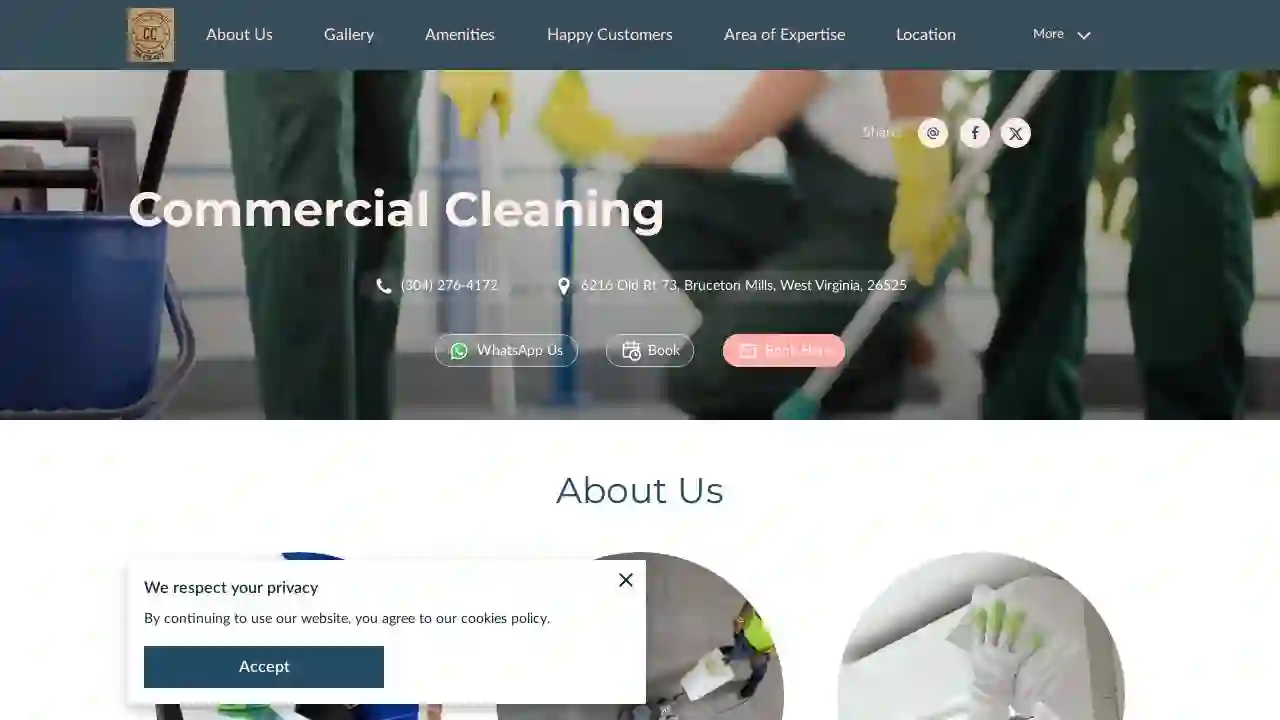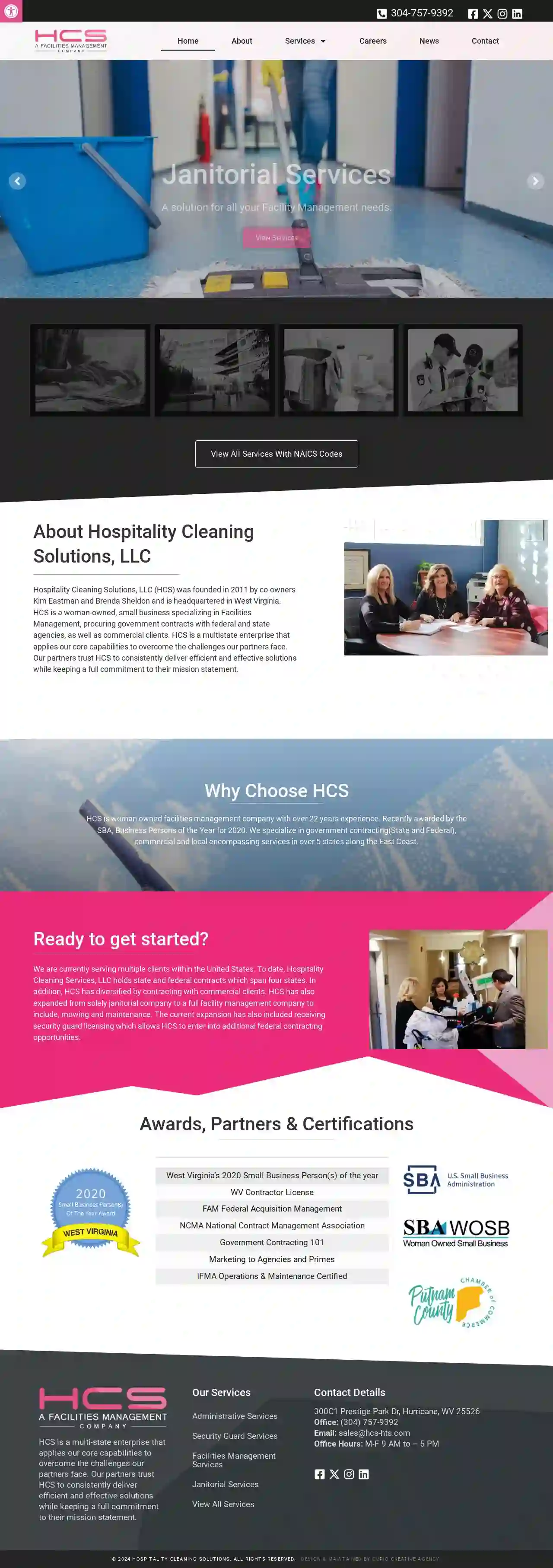Cleaning Services Burke Centre
Find the best Local Cleaners in Burke Centre
Get 3 FREE Cleaning Companies quotes for your project today! Compare profiles, reviews, accreditations, portfolio, etc... and choose the best offer.

Shaddai Cleaning Services
4.821 reviewsArlington, US- Services
- Why Us?
Get Quote
Suddenly Spotless
4.970 reviewsWinchester, US- Services
- Why Us?
- Gallery
Get Quote- Sh
Shanna's Cleaning Service
4.212 reviews123 Main St, Springfield, 12345, USShanna's Cleaning is a professional cleaning service dedicated to providing top-notch cleaning solutions to homes and businesses. With a focus on customer satisfaction and quality service, Shanna's Cleaning strives to make every space sparkle and shine.
- Services
- Why Us?
- Accreditations
- Our Team
- Testimonials
- Gallery
Get Quote 
Nowa Diamond Shine, LLC
4.9153 reviewsWinchester, US- Services
- Why Us?
- Gallery
Get Quote
Commercial Cleaning
Bruceton Mills, 6216 Old Rt 73, 26525, USAt Commercial Cleaning, we pride ourselves on offering top-notch commercial cleaning services across Morgantown and its surrounding areas. Our team of professional cleaners is dedicated to providing a tailored approach to meet the unique needs of each client. With a wealth of diverse industry experience, we can handle any cleaning task with ease. From offices and business establishments to residential properties, we use state-of-the-art cleaning equipment to provide an in-depth operation, including carpet cleaning, desk cleaning, kitchen maintenance, and fridge cleaning. Our goal is to ensure client satisfaction with our cleaning services, and we take a comprehensive approach to achieve this. We are fully committed to providing exceptional service and building long-lasting relationships with our clients.
- Services
- Why Us?
- Testimonials
- Gallery
Get Quote
Vieplex, LLC
549 reviewsWinchester, US- Services
- Why Us?
- Gallery
Get Quote
Hospitality Cleaning Solutions, LLC
53 reviews300C1 Prestige Park Dr, Hurricane, 25526, USHospitality Cleaning Solutions, LLC (HCS) was founded in 2011 by co-owners Kim Eastman and Brenda Sheldon and is headquartered in West Virginia. HCS is a woman-owned, small business specializing in Facilities Management, procuring government contracts with federal and state agencies, as well as commercial clients. HCS is a multistate enterprise that applies our core capabilities to overcome the challenges our partners face. Our partners trust HCS to consistently deliver efficient and effective solutions while keeping a full commitment to their mission statement. HCS is woman owned facilities management company with over 22 years experience. Recently awarded by the SBA, Business Persons of the year for 2020. We specialize in government contracting(State and Federal), commercial and local encompassing services in over 5 states along the East Coast. We are currently serving multiple clients within the United States. To date, Hospitality Cleaning Services, LLC holds state and federal contracts which span four states. In addition, HCS has diversified by contracting with commercial clients. HCS has also expanded from solely janitorial company to a full facility management company to include, mowing and maintenance. The current expansion has also included receiving security guard licensing which allows HCS to enter into additional federal contracting opportunities.
- Services
- Why Us?
- Accreditations
- Gallery
Get Quote
Molly Maid of Virginia Beach
4.8343 reviewsVirginia Beach, US- Services
- Why Us?
Get Quote
Chesapeake ABM Office
3.98 reviewsChesapeake, US- Services
- Why Us?
Get Quote- DM
DM CLEANING LLC
510 reviewsRoanoke, US- Services
- Why Us?
Get Quote
Over 60,241+ Janitorial Contractors onboarded
Our janitorial services operate in Burke Centre and surroundings!
CleaningMatch has curated and vetted Top Cleaning Services arround Burke Centre. Find a top & reliable contractor today.
Frequently Asked Questions About Cleaning Services
- White Vinegar: A versatile cleaner that cuts through grease, removes stains, and deodorizes. Mix equal parts water and vinegar for a general-purpose cleaner.
- Baking Soda: A natural abrasive and deodorizer. Sprinkle baking soda on surfaces, let it sit, then scrub and rinse.
- Lemon Juice: Acts as a natural bleaching agent and disinfectant. Mix lemon juice with water for a cleaning solution or use it directly on stains.
- Castile Soap: A gentle and biodegradable soap made from plant oils. Mix a few drops of castile soap with water for a versatile cleaning solution.
- Essential Oils: Add a few drops of essential oils like tea tree oil or lavender oil to cleaning solutions for a natural fragrance and antibacterial properties.
- Clean Pet Bedding: Wash pet bedding regularly in hot water to remove odors and bacteria.
- Vacuum Thoroughly: Vacuum carpets, rugs, and upholstery frequently using a vacuum cleaner with a pet hair attachment.
- Enzyme Cleaners: Use enzyme cleaners specifically designed for pet odors. These cleaners break down the odor-causing molecules.
- Baking Soda: Sprinkle baking soda on carpets and upholstery, let it sit for a few hours, then vacuum. Baking soda absorbs odors.
- Air Fresheners: Use air fresheners or diffusers to mask odors temporarily.
- Professional Cleaning: For persistent odors, consider hiring a professional cleaning service specializing in pet odor removal.
- Experience and a proven track record: Choose companies with a solid history of providing quality cleaning services.
- Positive customer reviews and testimonials: Check online reviews and ratings to gauge customer satisfaction.
- Licensed and insured professionals: Ensure the company has the necessary licenses and insurance to protect you from liability.
- Clear and transparent pricing: Obtain detailed quotes and compare prices from multiple companies.
- Good communication and responsiveness: Choose a company that communicates clearly, responds promptly, and addresses your concerns.
- Dishes: Load the dishwasher or wash dishes by hand.
- Sink: Clean the sink with a sponge or cloth and dish soap. Pay attention to the faucet and drain. You can also use a baking soda paste to remove stubborn stains.
- Countertops: Wipe down countertops with a disinfectant cleaner or all-purpose cleaner.
- Stovetop: Clean the stovetop with a degreaser or stovetop cleaner. Remove burner grates and wash them separately if needed.
- Oven: Clean the oven according to the manufacturer's instructions. You can use a self-cleaning function or a commercial oven cleaner.
- Microwave: Clean the microwave interior with a damp cloth or sponge. For stuck-on food, heat a bowl of water with lemon juice in the microwave for a few minutes to loosen debris.
- Refrigerator: Wipe down the refrigerator shelves and drawers with a damp cloth or sponge. Remove any expired food and clean spills promptly.
- Floors: Sweep or vacuum the floor, then mop with a floor cleaner suitable for your kitchen floor type.
- Trash: Empty the trash can and recycling bin.
What are some eco-friendly cleaning solutions?
Remember to test these solutions on a small, inconspicuous area first to ensure they don't damage delicate surfaces.
How do I get rid of pet odors in my home?
Regular cleaning, enzyme cleaners, and baking soda are effective methods for eliminating pet odors and maintaining a fresh-smelling home.
How do I find a good cleaning service?
Utilize online directories like CleaningMatch to find and compare qualified cleaning services in your area.
What is the most efficient way to clean a kitchen?
Regularly cleaning your kitchen helps maintain a hygienic and organized space for cooking and dining.
What are some eco-friendly cleaning solutions?
- White Vinegar: A versatile cleaner that cuts through grease, removes stains, and deodorizes. Mix equal parts water and vinegar for a general-purpose cleaner.
- Baking Soda: A natural abrasive and deodorizer. Sprinkle baking soda on surfaces, let it sit, then scrub and rinse.
- Lemon Juice: Acts as a natural bleaching agent and disinfectant. Mix lemon juice with water for a cleaning solution or use it directly on stains.
- Castile Soap: A gentle and biodegradable soap made from plant oils. Mix a few drops of castile soap with water for a versatile cleaning solution.
- Essential Oils: Add a few drops of essential oils like tea tree oil or lavender oil to cleaning solutions for a natural fragrance and antibacterial properties.
Remember to test these solutions on a small, inconspicuous area first to ensure they don't damage delicate surfaces.
How do I get rid of pet odors in my home?
- Clean Pet Bedding: Wash pet bedding regularly in hot water to remove odors and bacteria.
- Vacuum Thoroughly: Vacuum carpets, rugs, and upholstery frequently using a vacuum cleaner with a pet hair attachment.
- Enzyme Cleaners: Use enzyme cleaners specifically designed for pet odors. These cleaners break down the odor-causing molecules.
- Baking Soda: Sprinkle baking soda on carpets and upholstery, let it sit for a few hours, then vacuum. Baking soda absorbs odors.
- Air Fresheners: Use air fresheners or diffusers to mask odors temporarily.
- Professional Cleaning: For persistent odors, consider hiring a professional cleaning service specializing in pet odor removal.
Regular cleaning, enzyme cleaners, and baking soda are effective methods for eliminating pet odors and maintaining a fresh-smelling home.
How do I find a good cleaning service?
- Experience and a proven track record: Choose companies with a solid history of providing quality cleaning services.
- Positive customer reviews and testimonials: Check online reviews and ratings to gauge customer satisfaction.
- Licensed and insured professionals: Ensure the company has the necessary licenses and insurance to protect you from liability.
- Clear and transparent pricing: Obtain detailed quotes and compare prices from multiple companies.
- Good communication and responsiveness: Choose a company that communicates clearly, responds promptly, and addresses your concerns.
Utilize online directories like CleaningMatch to find and compare qualified cleaning services in your area.
What is the most efficient way to clean a kitchen?
- Dishes: Load the dishwasher or wash dishes by hand.
- Sink: Clean the sink with a sponge or cloth and dish soap. Pay attention to the faucet and drain. You can also use a baking soda paste to remove stubborn stains.
- Countertops: Wipe down countertops with a disinfectant cleaner or all-purpose cleaner.
- Stovetop: Clean the stovetop with a degreaser or stovetop cleaner. Remove burner grates and wash them separately if needed.
- Oven: Clean the oven according to the manufacturer's instructions. You can use a self-cleaning function or a commercial oven cleaner.
- Microwave: Clean the microwave interior with a damp cloth or sponge. For stuck-on food, heat a bowl of water with lemon juice in the microwave for a few minutes to loosen debris.
- Refrigerator: Wipe down the refrigerator shelves and drawers with a damp cloth or sponge. Remove any expired food and clean spills promptly.
- Floors: Sweep or vacuum the floor, then mop with a floor cleaner suitable for your kitchen floor type.
- Trash: Empty the trash can and recycling bin.
Regularly cleaning your kitchen helps maintain a hygienic and organized space for cooking and dining.